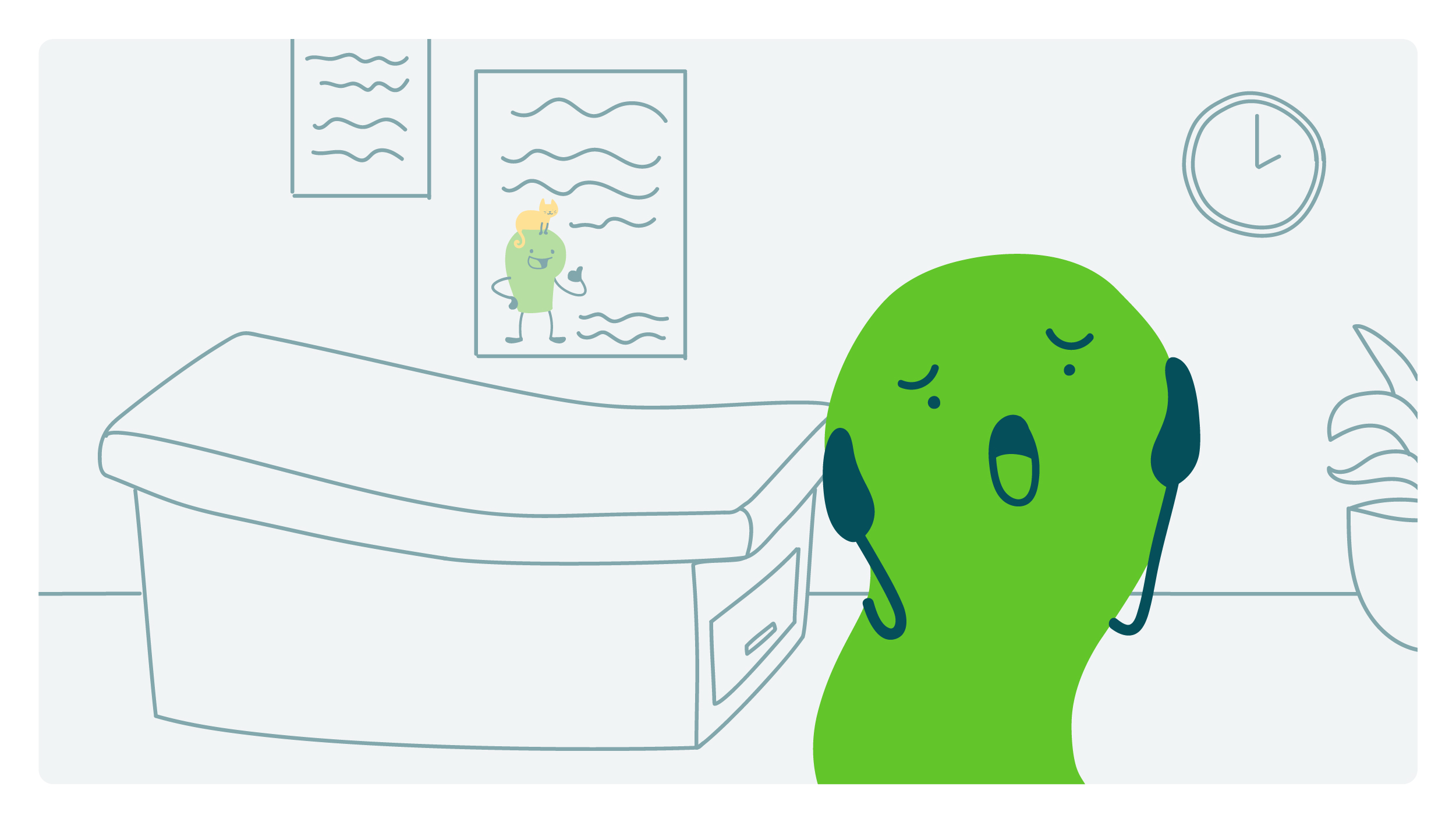
Picture this: You’re in the ER with intense pain in your leg. It’s early pandemic days, so you’re concerned that your outing to the hospital will result not only in some sort of medical attention — but also in a COVID diagnosis. Not to mention the fact that COVID means no hospital visitors, so you’re alone.
Then a doctor you’ve never met appears, announcing that your pain is due to a blood clot — and she lays out some options, one of which is emergency surgery. Considering the context, how do you think you’d rate your health literacy skills in that moment? Do you imagine you’d be on top of your game at digesting complex health information and using it to make informed decisions?
While we can’t know for sure — perhaps this hypothetical “you” has superpowers that are beyond the rest of us — we’re going to make an educated guess that no, you would not be at the top of your game. Because even though your actual day job is to create plain language health materials, the stress, pain, and anxiety of your present situation has totally changed said game.
This is representative of a concept that we’re always talking about here at We ❤️ Health Literacy HQ: Anyone can have limited health literacy skills sometimes. In other words, health literacy is a state, not a trait.
This is a phrase that’s gained traction over the years (and seems most often attributed to Dr. Dean Schillinger, though if you have any concrete info about its origin, we’d ❤️ to hear it!). But it wasn’t necessarily the standard way to look at things when health literacy was a somewhat new topic of conversation.
Instead, that conversation often went something like this: “As many as 9 in 10 Americans have limited health literacy skills. That means we’d better make our health info easier for the people with limited health literacy skills to understand.” We also drew on data telling us who was most likely to have limited health literacy skills — for example, people with lower levels of education and household incomes or non-native English speakers.
While that’s all true — and it’s also true we had to start somewhere — this framing puts the onus on individuals’ lack of ability to access, understand, and use health information. And in doing so, it glosses over the fact that health literacy is situational — it’s not a fixed character trait. When we prioritize and improve it, we make things easier for everyone — including people with super-high baseline health literacy skills who happen to be busy, stressed, sick, or scared in the moment.
And prioritizing and improving health literacy requires systemic change — not modifications to account for people’s “deficits.” As CH President Stacy Robison wrote, “If the ‘problem’ affects 90 percent of people, maybe it’s not them… Maybe it’s us!”
Being such committed health literacy advocates, dear readers, you’ve doubtless heard all this before. But it’s an incredibly important part of the health literacy conversation, and it’s critical that we keep ourselves accountable in this space. So the next time you’re giving a health literacy training, working through a health comm challenge with your colleagues, or talking about health literacy at a dinner party (wait, you don’t do that?), keep this idea top of mind. When we do that, everyone wins.
The bottom line: Health literacy is a state, not a trait. And it’s very important that health communicators bring that perspective to the table.
Browse recent posts